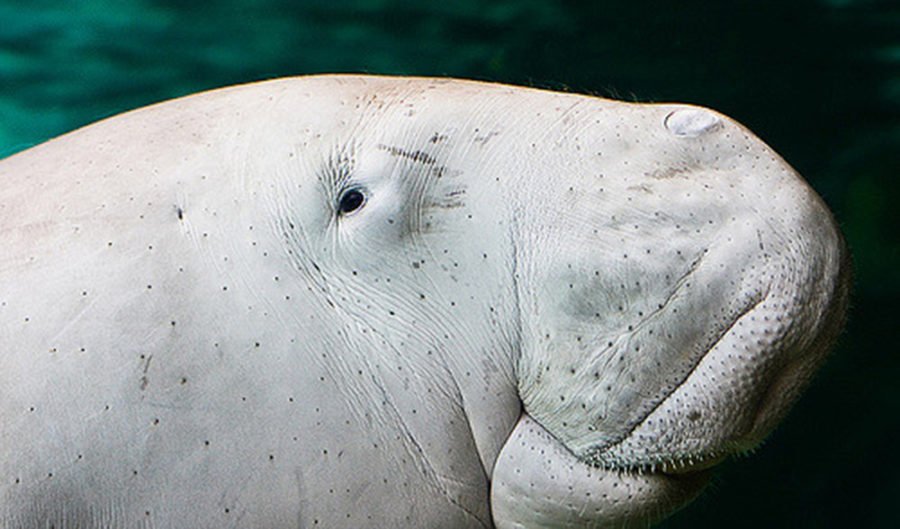The number of baby dugongs in the Great Barrier Reef has increased

THE POPULATION OF DUGONG calves in the southern Great Barrier Reef area is growing steadily after populations were devastated back in 2011 following Cyclone Yasi, which ripped up the marine animals’ primary food source.
Aerial surveys conducted by James Cook University as part of a project funded by the Australian Marine Mammal Centre, found that baby dugongs make up 10 per cent of the overall dugong population, up from zero in 2011.
Researchers from James Cook University estimated that, overall, there were 2800 dugongs in the Great Barrier Reef World Heritage Area, while another 2700 resided north of Hinchinbrook Island and the Queensland-New South Wales border.
Helen Marsh, a professor at James Cook University, said the increase in population can be attributed to the replenishment of food sources in the area.
“The substantial increase in dugong calves can be linked to the better food sources available for adult dugongs, as the condition of intertidal seagrass cover has improved as a result of less rainfall and flooding.”
To further conserve sea turtle and dugong populations, following the 2011 floods the Gooreng Gooreng, Gurang, Taribelang Bunda and Bailai people agreed to stop traditional hunting. A $5-million federal government funding package was provided to these groups to implement the ban and conserve the species.
However, late last year Marsh argued that climate change was the number one threat to dugongs and sea turtles.
“While more is being done to address traditional hunting than any of the other impacts, the main threats to their survival often pass unnoticed.
“Australian waters are home to some of the world’s largest populations of marine turtles and dugongs. A comprehensive and balanced approach to their conservation and management is required to enable our grandchildren and their children to enjoy these amazing animals.”
The aerial surveys are a part of a much larger project on behalf of the Great Barrier Reef Marine Park Authority known as the ‘Reef 2050 Integrated Monitoring and Reporting Program’, which focuses on sustainability strategies for the reef.
Following a recent Reef 2050 Advisory Committee meeting, the programs failure to acknowledge the threats of climate change was again put under the microscope.
Richard Leck, the Head of Oceans and Sustainable Development at WWF, told The Guardian, “the Great Barrier Reef is a system in crisis. And the elephant in the room, that is not included in the plan, and Australia is not performing well on, is climate change.”
The next aerial surveys monitoring dugong populations will take place between October-November 2018.
Roger Beeden emphasised the need for these aerial surveys every five years.
“It is important we understand the health of the dugong population to inform management actions including permits, plans and other decisions.”
READ MORE:
- Traditional hunting gets the headlines, but is not the big threat to turtles and dugongs.
- Nets bad news for migrating dugongs.
- Gallery: Dugongs, the mermaids of Moreton bay.

